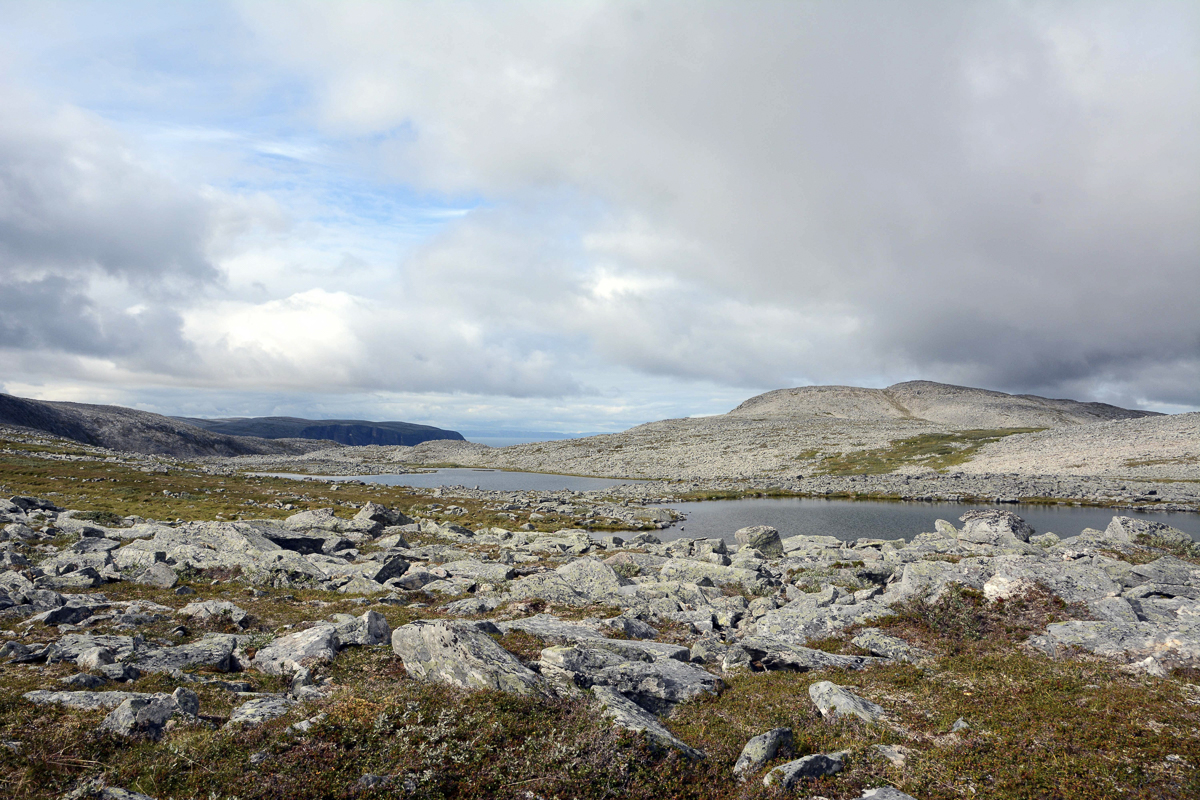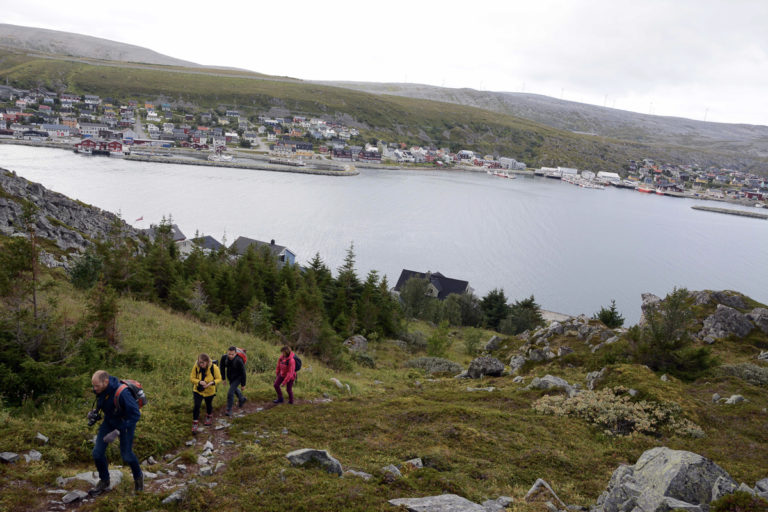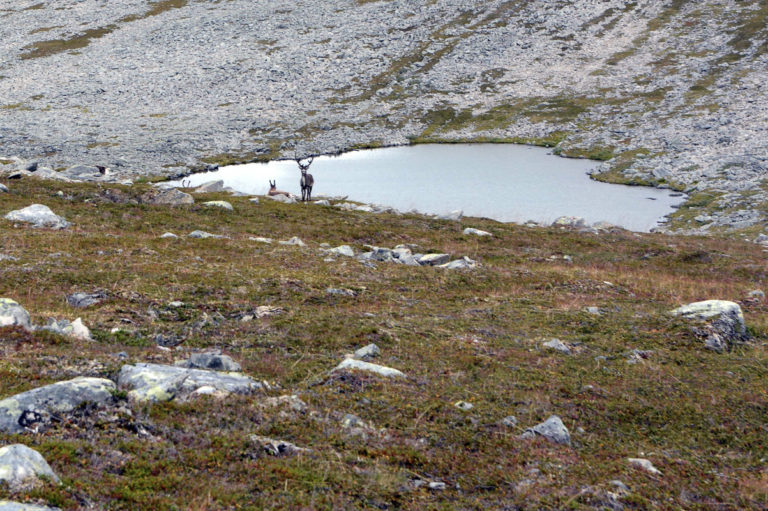Skjøtningberg is a remote fishing village on the Nordkyn peninsula. If you walk 10 km (6 miles) over the mountains from Kjøllefjord, you will reach an arctic coastal plateau, with sea views which extend towards North Cape and an encounter with a settlement that has reached retirement age.
The trail starts with a bang, as we head up the steep slope immediately behind the settlement of Kjøllefjord. We soon climb a couple of hundred meters and are rewarded with wonderful views across Kjøllefjord. The vegetation on the steep slope is surprisingly lush and includes some fir trees which were planted here as part of a research project. We also pass the Pyntestein stone, behind which the inhabitants of Skjøtningberg used to put on their finery before heading down into Kjøllefjord.
You can see Nordkapp from the plateau
The trail gradually levels off and we eventually reach the mountain plateau. The walking is generally easy, although there are short sections of scree and rock in places. Once you are up on the plateau, the views are extensive. You can see the Kjøllefjord valley in the south, while in the far west, you can make out Magerøya and North Cape as blue forms in the clear late summer air. The rocky landscape is reflected in the tarns, and from time to time we encounter the narrow gravel track to Skjøtningberg. A few reindeers eye us inquisitively, but run off before we get too close.
Walk down into Skjøtningberg village
Eventually, we can see down towards Skjøtningberg and the diminutive bay with its sandy beach and little huddle of houses all in a row. On the lush valley sides, summer guests pick bilberries and cloud berries, and we begin to understand just why people chose to settle here in this luxuriant paradise. Full of expectation, we head down over the soft heather-covered terrain and on to the old gravel road, where we cross the 71st parallel.
Skjøtningberg is a reminder of a bygone era
Today, Skjøtningberg is a compact summer paradise for former residents and their descendants. In the heart of the village is a stone breakwater and a quay. The houses are situated above the road. Some are in the reconstruction style dating from the 1940s and ‘50s, but most are basic cabins of more recent vintage. Small gardens with blue monkshood and yellow ice poppies surround the houses. We greet some neighbours enjoying the day up on their verandas, and settle down on the rocks next to the breakwater to enjoy our packed lunch. The cries of seagulls, the lapping of the waves, the boats moored in the bay; we are soon engulfed by the calm atmosphere of late summer.
Skjøtningberg has a long fishing past
Skjøtningberg was established as a fishing village with a church all the way back in the 15th century, and around 1900, the village was a prominent settlement on the Nordkyn peninsula. Situated out on the outer seaboard, it was just a stone’s throw away from the fishing grounds, and the light, open boats could easily be dragged ashore. The women kept a cow and a few goats, and looked after the home. However, boat engines became available around this time and the harbour in Skjøtningberg was unable to compete with its Kjøllefjord counterpart. In autumn 1944, all the buildings in the settlement were burned down, as happened throughout Finnmark at that time. It was decided that Skjøtningberg would not be rebuilt, but people returned and built new houses anyway. It all came to an abrupt end in the late 1960s, however, and since then Skjøtningberg has only ever been inhabited during the summer.
The walk to Skjøtningberg is an easy one
Anyone who is able to walk 10 km (6 miles) can make it to Skjøtningberg. It is fairly steep at the start, but only enough to get you warm. However, the trail passes through an arctic environment, and you can never be sure whether you will face a strong wind on the summit or be enveloped by fog or mist. You should therefore put an extra fleece in your rucksack, just in case. It is a 10 km walk from Kjøllefjord, and takes about two to three hours. Collection from Skjøtningberg can be arranged via the tourist information office in Kjøllefjord. Experienced walkers will of course walk back too. A narrow gravel road, open during summer, leads from Kjøllefjord to Skjøtningberg.


